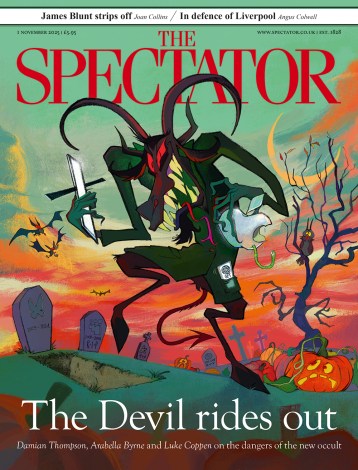Kisangani, capital of the province of Orientale, Democratic Republic of the Congo, once Zaire, is the setting for A Bend in the River, V.S. Naipaul’s grim masterpiece, published in 1979, about post-colonial reality in central Africa. Naipaul’s plot describes a tribal war that threatens the city. This actually happened 20 years later, when Kisangani became a battlefield for the bandit armies of Uganda and Rwanda. The city is now controlled by General Jean-Claude Kifwa, commander of the 9th Military Region of the Armed Forces of the DRC. We arrive to find that the temperature has reached a seasonal 40 ºC. A thunderstorm lasting most of our first night reduces this to a more bearable level. The Congo River is why we are here, filming Snake Dance, a historical documentary. Luc, the sound engineer, asks our minder, ‘the colonel’, what would happen if we were on the river in a canoe when a storm broke. ‘Then my friend, you would be in the shit, up to your neck.’ And the colonel — ex-Belgian military intelligence — laughs one of his great clanging steel laughs, the only ones that really crack him up. It was Clemenceau who said that military justice bore the same relationship to justice as military music did to music. We begin to worry about the military sense of humour.
Our first day of filming on the banks of the Congo. The delicate pirogues on the waters below seem to be drifting helplessly in the current. From this distance, it is impossible to tell which bank the oarsmen are trying to reach. One man stands with a long paddle in the bows, another stands in the stern, together they spin the narrow craft across to the far bank, 40 minutes away. As we start to film there is an interruption; yet another plain-clothes government agent has crawled out of a log and is banning the shoot. After a long palaver under a sunshade the colonel asks what he wants. ‘Well, you could always corrupt me.’ The flic has heard about this corruption business and he wants in. ‘No problem.’ Within a few moments, filming resumes.
The DRC is a land of rumours. With no reliable national news service available, rumours have replaced the talking drums of colonial times. In the course of four weeks we learn that that the President, His Honour Joseph Kabila, has recently purchased Neverland from Michael Jackson. Meanwhile the previous president, his father Laurent Désiré Kabila, who was assassinated by one of his own bodyguards in 2001, is actually still alive although the bullets that struck him have made him invisible. The wealthy southern province of Katanga is again on the point of secession. Furthermore the country’s only uranium mine is today guarded by South African soldiers who are actually US special forces in disguise. Alternately the mine is unguarded and being operated by agents of the Hezbollah who are working for the Iranians. Meanwhile actual historical events — such as an attempted coup in mid-March, during which several people were shot dead on the streets of the capital, Kinshasa — go unreported. One might as well be back in Ukay reading the redtops.
‘Silence. On tourne.’ Manu Riche, our director, has a natural authority when he is shooting. His commands ring out over the treetops and rivers of the rainforest, and human voices are stilled. The insects, birds and echoes of Africa pay no attention and for the Congolese audience this provides one of the great comic moments of the day. The Belgians conquered this country, they created it, then they abandoned it, and murdered the elected prime minister, and the place has been a mess ever since. Now the Belgians are back, to film the consequences and to command silence. Strange people. ‘You are revealing all the shame of the Congo,’ says one lucid official. We hope he will see it differently when he views the film.
The director is either recklessly brave or has unusual powers of concentration. At an illegal mine near Lubumbashi we are suddenly surrounded by a sullen crowd of outlaws armed with shovels. The mobile in my pocket leaps into life and it is the colonel ordering us out. I tell him that it will take me some time to rejoin the crew but that I will ensure the director gets the message. Result, zero. ‘Silence, on tourne.’ The mobile goes again. ‘Where are you?’ Still filming. ‘I told you to get out. You have to leave immediately. There’s a lot going on that you cannot see. The mood of that crowd can change in a matter of seconds.’ I explain that the message has been passed on and that I will raise the matter again. An older woman confronts me. She has spent ten hours grubbing through foul-smelling silt to fill a basket with cobalt scrapings and earn $2. Now she wants money or a lift home. ‘You are not very nice,’ she replies when I explain that neither will be possible. This is not promising. I have never been so grateful for the archaic courtesies of the French language. As long as she and I continue to construct these and exchange them, there is the illusion of control over the surrounding crowd. On the way out we note signs of an increased police presence. Two previously amiable uniformed officers armed with automatic weapons have somehow managed to get quite drunk in the interval and are waving their guns around. Last week the police shot down a crowd of illegal miners 30km away at Kawama. We climb back into our van and leave the miners gathered in the dusk, facing the long road home.
In Voyage au bout de la nuit, Celine suggested that the collapse of the colonial system could be dated from the moment when the ice cube reached Africa. But I doubt whether it would have been possible for our crew to manage four weeks’ shooting in the DRC without a nightly crate of iced Simba beer. The colonel smokes like a chimney and I ask him which he finds more stressful, military intelligence or dealing with ‘artistes’. After a brief pause he says that the sole advantage of the film crew is that no one is actively trying to kill him. Otherwise he prefers the military life.





Comments